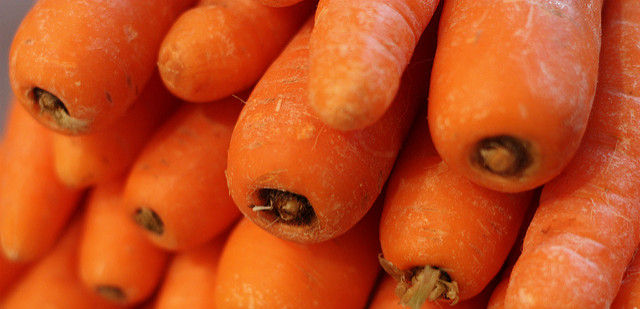You are here
Recovering the value from food: A social perspective

A previous blog introduced four Water, Energy, Food-nexus (WEF) relevant innovations which are the focus of Stepping Up. We use case studies of these innovations to establish an understanding of their potential for scaling up to address WEF-nexus challenges. These innovations are anaerobic digestion, insects as a novel source of protein, and the social as well as technical recovery of value from surplus food. They have all been identified as developments with the potential to alleviate environmental and social burdens across the WEF-nexus, and whose impacts under different scenarios merit more attention. This blog series discusses in greater depth the rationale for selecting these particular innovations. The first blog covered anaerobic digestion and this second blog covers social recovery of value from surplus food.
It is estimated that approximately 30% of all the food that is produced globally, is wasted. In the UK it is a similar situation, with data showing that the wasted food is equivalent to approximately 25% of that purchased. The majority of this occurs within households, which represent about 50% of the waste, with around 5.4 million tonnes of potentially avoidable food and drink being disposed of annually. Further losses occur in the field, partly driven by aesthetic demands of retailers leading to overproduction to ensure a saleable crop: these practices are the subject of high profile campaigns for reduction. A third area of significance is the waste of food which becomes surplus to requirements in the retail sector. This results in a further 400,000 tonnes of food fit for human consumption being wasted.
Increasingly, waste food generated through this route is sent to anaerobic digestion plants where it can be used to generate methane and nutrient rich digestate. While this treats the waste by a means aligned to the circular economy principles, the energy and nutrients recaptured only go so far in the creation of more food. It is argued that a more beneficial route is to ensure that the food does not become waste in the first place and is instead fed to the original intended recipients: people. There is an increasingly common practice of diverting this food from becoming a waste stream and donating it to charities who feed those in need, thereby releasing a “social value” from it. In other countries this is achieved either through coercion, as exemplified by laws passed in France, or by encouragement, as in Italy’s case. At present such laws do not exist in the UK, so it is up to charities such as FareShare or the Devon and Cornwall Food Association to capture that social value. While growing in size, the largest of these charities, FareShare, still only captures about 2% of the surplus food generated in the UK.
In contrast to the other case studies chosen by Stepping Up, food diversion represents a wholly social innovation, which aims to reduce food waste and channel that resource into socially beneficial outlets, rather than maximise profits. In order for these programmes to be successful, it is necessary to explore how the generators of the surplus food (e.g. supermarkets or producers) can receive an added value to their business, by donating the food, which can compete with other more tangible returns. For example, it may be simple enough for a food supplier to allow food waste to go to an anaerobic digestion plant which can afford to pay a modest fee for it in exchange: a charity however may not have the luxury of paying for the food, so must find other ways of allowing the supplier to recoup the lost revenue stream. Such other, innovative methods can be explored for how they may be applied more widely across the WEF-nexus. This is especially relevant in situations where the economics of an innovation may be seen as a hindrance (for example, in purely monetary terms, an operating expenditure that outstrips earnings). As an innovation focusing on consumption, this innovation also offers a useful contrast to the other production-oriented case studies we are considering in Stepping Up.
With respect to transformation of the WEF-nexus, like anaerobic digestion, no single innovation will lead to a step change in improved sustainability, but the findings will feed into the wider discussion. The regulatory definition and resulting treatment of waste is a cross-cutting barrier to the re-use of materials. This is especially true of food for human consumption which has high standards of safety associated with its production and retail. The exploration of how such regulation can be made more flexible, or how to work more effectively within it, will allow the extraction of more value along the supply chain and may be applicable across many aspects of the WEF-nexus. By reducing the amount of food waste, resources can be released to feed the growing population, give breathing space for better management of agricultural systems which will enable better protection of the bio-sphere whilst still meeting our demands.
In addition to the benefits of scaling up the social recapture of value from food, there are other avenues to explore. For example, is there a scale of diminishing returns in terms of the cost of acquiring and redistributing more and more food? How can the added value of preventing food waste offset the gains that may be achieved by sending the same resource to anaerobic digestion? By aiding retailers in identifying surplus food and improving their supply chain efficiency, might the charity actually cause its resource to dry up? The next blog will cover the potential for technical recovery of value from surplus food.
Image credits: A Surplus of Carrots: Helen Taylor (Flickr link). License: CC BY-NC 2.0
©Steppingup 2024

